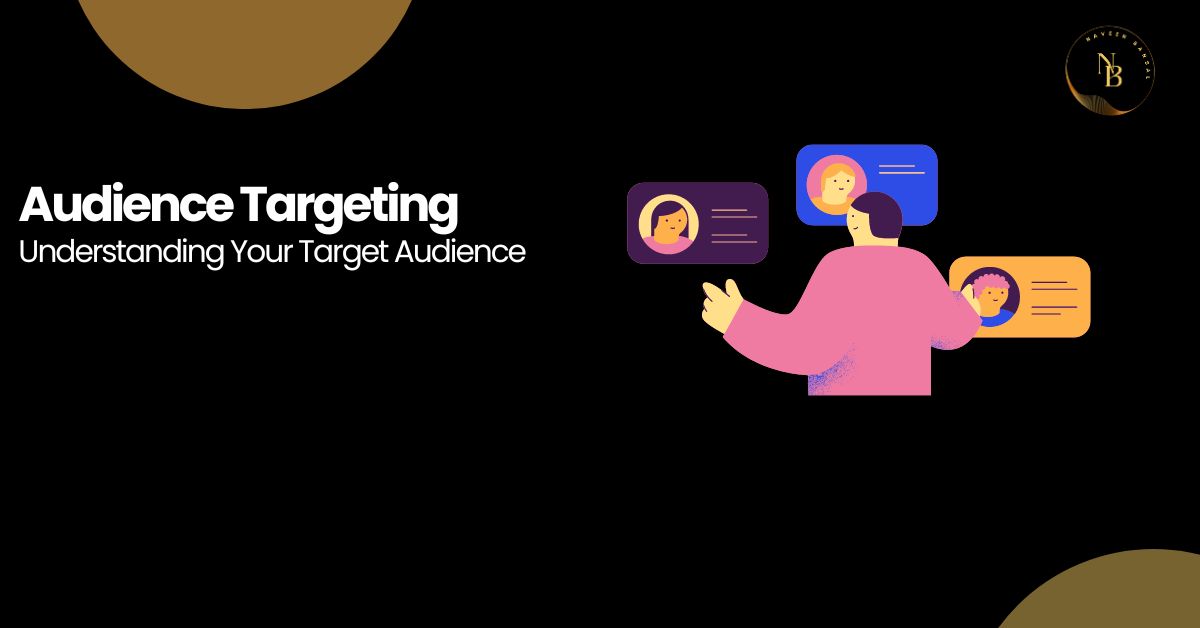In today’s digital age, effective audience targeting is crucial for the success of any digital marketing campaign. Businesses need to reach the right audience at the right time to maximize their marketing efforts. Google Ads, a leading online advertising platform, offers powerful audience targeting capabilities that empower businesses to deliver personalized messages to their target audience. This article explores the benefits of Google Ads audience targeting, Understand target audience and how it can help businesses achieve their digital marketing goals.
Learn how to effectively engage and connect with your target audience, driving better customer engagement, loyalty, and business growth with Naveen Bansal Online marketing consultant in India.
The Importance of Audience Targeting in Digital Marketing
Audience targeting is a critical aspect of digital marketing. It enables businesses to focus their advertising efforts on specific groups of people who are most likely to be interested in their products or services. By reaching the right audience, businesses can increase engagement, conversions, and ultimately, the return on investment (ROI) of their marketing campaigns.
Understanding Google Ads Audience Targeting
Google Ads provides businesses with a range of audience targeting options to help them connect with their desired audience. These targeting options utilize a combination of demographic data, user interests, online behavior, and more. By leveraging these targeting capabilities, businesses can deliver highly relevant ads to users who are most likely to convert.
Understanding Your Target Audience with Key Insights for Effective Marketing connect Naveen Bansal Online marketing consultant in India.
Demographic Targeting: Reaching the Right People
Demographic targeting allows businesses to tailor their ads based on characteristics such as age, gender, household income, and parental status. By understanding the demographics of their target audience, businesses can create more personalized and relevant ads, leading to higher engagement and conversions.
Interest-Based Targeting: Engaging Relevant Audiences
Interest-based targeting enables businesses to reach users who have shown interest in specific topics, industries, or products. Google Ads analyzes users’ online behavior, search history, and website visits to determine their interests. By targeting users with relevant interests, businesses can deliver ads that resonate with their target audience’s preferences.
Remarketing: Reconnecting with Interested Users
Remarketing allows businesses to re-engage with users who have previously interacted with their website or app. By placing a tracking pixel on their site, businesses can create custom audiences and show tailored ads to these users as they browse other websites or use mobile apps. Remarketing keeps businesses top-of-mind and encourages users to revisit their site and complete a desired action.
Custom Intent Audiences: Targeting Based on User Intent
Custom Intent Audiences enable businesses to reach users who have demonstrated intent to purchase specific products or services. By using keywords, URLs, and apps related to their offerings, businesses can create custom intent audiences. This targeting method helps businesses connect with users who are actively researching or considering making a purchase, increasing the likelihood of conversions.
In-Market Audiences: Reaching Active Buyers
In-Market Audiences allow businesses to target users who are actively researching or considering making a purchase in a specific product or service category. Google Ads analyzes user behavior, search queries, and website visits to identify users who exhibit strong purchase intent. By targeting these in-market audiences, businesses can focus their efforts on users who are more likely to convert.
Similar Audiences: Expanding Reach to Similar Users
Similar Audiences enable businesses to expand their reach to users who share similarities with their existing customers. Google Ads analyzes the characteristics and behaviors of businesses’ remarketing or customer match lists to identify users who have similar attributes. By targeting similar audiences, businesses can reach new potential customers who are likely to be interested in their offerings.
Location Targeting: Relevance in Local Markets
Location targeting allows businesses to focus their ads on specific geographic locations. Whether targeting a city, region, or country, businesses can ensure their ads are relevant to the local audience. This is especially valuable for businesses with physical locations or those operating in specific markets.
Device Targeting: Optimizing for Different Devices
Device targeting enables businesses to optimize their ads for different devices, including desktops, mobile devices, and tablets. By understanding how users interact with ads on different devices, businesses can tailor their messaging and ad formats to provide the best user experience and increase conversions.
Ad Schedule Targeting: Reaching Users at the Right Time
Ad schedule targeting goes a step further by enabling businesses to set specific time intervals for their ads to appear. This allows businesses to optimize their ad delivery based on user behavior patterns, preferences, and peak activity hours. Ad schedule targeting ensures businesses are reaching their audience at the most effective times.
Flexible Budget Allocation with Audience Targeting
Audience targeting provides businesses with the flexibility to allocate their budget more effectively. By focusing their advertising efforts on specific audience segments, businesses can optimize their budget allocation to reach the most valuable users. This ensures that their budget is utilized efficiently, resulting in a higher ROI for their digital marketing campaigns.
Measuring Success with Audience Targeting
Google Ads provides businesses with robust measurement tools to track the success of their audience targeting efforts. Consultants can monitor key metrics such as click-through rates, conversion rates, and cost per acquisition to assess the effectiveness of their targeting strategies. By analyzing these metrics, businesses can refine their targeting approach and improve campaign performance over time.
Conclusion
Google Ads audience targeting offers a multitude of benefits for businesses engaged in digital marketing. From demographic targeting to interest-based targeting, remarketing to custom intent audiences, businesses can leverage a range of targeting options to reach the right audience and drive better results. By tailoring their ads to the preferences and behaviors of their target audience, businesses can increase engagement, conversions, and ultimately, the success of their digital marketing campaigns.

